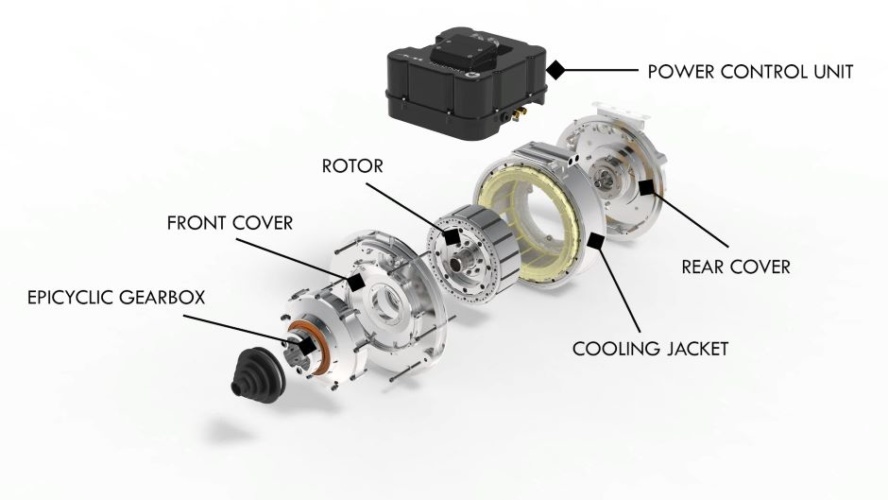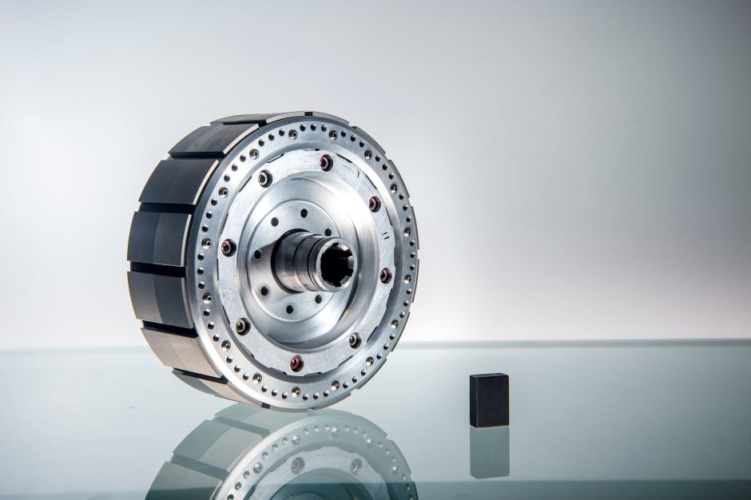 Are electric motors merely a commodity, like windscreen wipers, or are they something more important to the brand and R&D, asks Ian Foley, Managing Director, Equipmake.
Are electric motors merely a commodity, like windscreen wipers, or are they something more important to the brand and R&D, asks Ian Foley, Managing Director, Equipmake.
The internal combustion engine has been around for so long, and so integral to the average car, that most people have some understanding of what it does and how it does it.
Ampere electric motor targets record power density
You don’t have to be a petrolhead to know that a 6.0-litre V12 is more powerful than a 1.0-litre three-cylinder, while for enthusiasts, torque, turbochargers and compression ratios is a source of passionate conversation. And a reason to buy one car over another.
But even the most ardent petrolhead is unlikely to care that much about electric motors. They might have been around for a lot longer – 250 years versus 150 for ICE – but, whether it’s a Renault Zoe or a Ferrari SF90, most people have next to no knowledge of what makes electric motors special. Or even where they are on a car.
So where does that leave a manufacturer? Is the electric motor merely a commodity, like a windscreen wiper, or is it something more important to the brand and R&D?
OEMs may not trumpet motor development as much as they do with the ICE (or even batteries on an EV), but that is not to say it is not worth shouting about. The question is – does it make sense to develop in-house or use a supplier?

The in-house benefits are many. For starters, you can choose exactly what you want. Most EVs use synchronous motors, but whether you go for a permanent magnet or non-magnet type strongly influences performance. You can also focus on using lighter materials for construction or alternative solutions to rare-earth magnets.
You can define the motor’s efficiency map—as a function of torque and speed—to tailor for energy use (important for a family car EV battery) or peak power versus continuous power (crucial when it comes to high performance cars).
And because the part count and therefore the development cost is far lower than for a traditional ICE powertrain, you can make bespoke motors that push packaging to the extreme, allowing a specific motor to be developed in-house to make the most of the space on a platform.
So far, there are plenty of manufacturers who have gone in-house. Nissan, Toyota, Honda, Tesla and Ford have invested millions develop specific motors for important vehicles such as the LEAF, Prius, Model 3 and Mach-E (not to mention a rumoured electric version of the F150) respectively.
On the other hand, there are major Tier 1s such as Bosch, Valeo and BorgWarner who continue to supply an enormous number of EVs and hybrids – and have long established teams of engineers.
So where is the industry heading? What makes it so hard to predict is the rate of technology development.
My company, Equipmake, is a good example. Over the last five years, we’ve developed a range of permanent magnet motors that use a spoke architecture (so-called because the magnets are arranged like the spokes of a wheel) to bring a major cooling advantage. Because we can keep the motor cool, our motors can produce lots of power and torque, use less expensive magnet materials and conventional manufacturing methods.

The next stage is a 3D printed motor, called AMPERE. While most engineers would be overjoyed with a power to weight ratio of 4kW/kg – and even our lightest motor, the 125kW APM120 weighs just 14kg, giving it a power density of just under 9kW/kg – AMPERE’s target is less than 10kg, yet with a peak power output of 220kW giving it a power to weight ratio of over 22kW per kg.
That’s five times more than a conventional motor and double our own tech. It’ll also spin at 30,000rpm (versus 10,000rpm-12,000rpm), and use the least amount of high strength alloys expensive active materials, keeping cost right down. We’ll have a prototype ready in less than 12 months too.
Equipmake is just one, relatively small company from Norfolk – yet we are proof that development is moving at lightning pace.
So what of the wider industry? If OEMs continue to foresee cost and design benefits, then they will further migrate towards in-house – but if not, and if most mass market cars are based off a modular EV skateboard where ‘off-the-shelf’ makes sense, the trend may go in the other direction.
In many ways, the EV market is like the personal computer industry in the 80s. Technology is moving so quickly we don’t yet know what the de facto standard is. We’re going to need another decade to find out – and that is what is so exciting for engineers. Take it from me, we’re not going to wait and see. We will keep push the technology to its limits. Who knows, we might even make the automotive electric motor the subject of debate among petrolheads and regular car buyers alike.
Ian Foley, Managing Director, Equipmake










UK Enters ‘Golden Age of Nuclear’
Anybody know why it takes from 2025 to mid 2030's to build a factory-made SMR, by RR? Ten years... has there been no demonstrator either? Do RR...